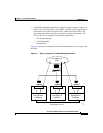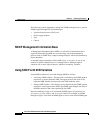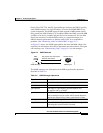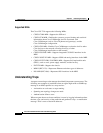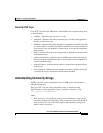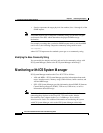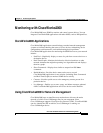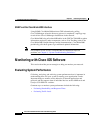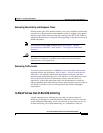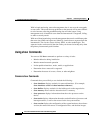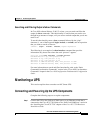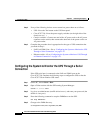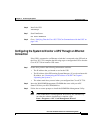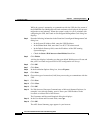
2-19
Cisco ICS 7750 Administration and Troubleshooting Guide
78-10169-02 Rev. B0
Chapter 2 Monitoring the System
Monitoring with Cisco IOS Software
Evaluating Reachability and Response Times
Polling remote parts of the network enables you to test reachability and measure
response times. Response-time measurements consist of sending a ping (packet
internet groper) packet and measuring the round-trip time (RTT) that it takes to
send the packet and receive a response. The ping packet is sent and received as an
ICMP echo packet.
Note For information about ping command usage, see Chapter 4, “System
Troubleshooting Guidelines,” and Chapter 7, “Solving Serial Connection
Problems.”
Caution Polling activity can result in a significant increase in network traffic.
Therefore it is important to carefully assess what level of monitoring is
appropriate for your organization.
Evaluating Traffic Loads
You can use protocol analyzers or SNMP tools to record traffic loads between
important sources and destinations. (See Chapter 4, “System Troubleshooting
Guidelines,” for additional information about protocol analyzers and other
monitoring and troubleshooting tools.) The objective is to document how much
data can pass between pairs of autonomous systems, networks, hosts, or
applications. Source and destination traffic-load documentation is useful for
capacity planning and troubleshooting. Source and destination traffic-load data is
also useful if you have a service-level agreement that includes throughput
requirements.
In-Band Versus Out-of-Band Monitoring
Another important factor affecting how and when you perform network
monitoring is the degree to which monitoring either does or does not consume
system bandwidth. Depending on how your network is structured, you can use
in-band monitoring, out-of-band monitoring, or a combination of the two.



